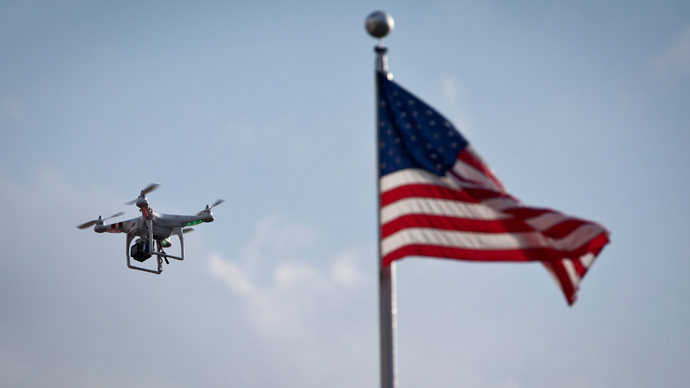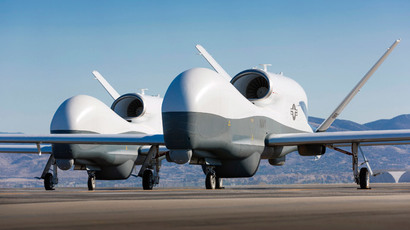DARPA introduces 'invulnerable' hack-proof drone

The Pentagon’s research arm has introduced a new unmanned drone with secure software that protects the control and navigation functions of the aircraft from a systems hack.
The Defense Advance Research Project Agency (DARPA) has developed the program – High Assurance Cyber Military Systems (HACMS) – over the last several years after it originated at the University of California San Diego and the University of Washington. The mini drone is made with software to thwart cyber attacks, said Kathleen Fisher, HACMS manager for DARPA.
“The software is designed to make sure a hacker cannot take over control of a UAS. The software is mathematically proven to be invulnerable to large classes of attack,” Fisher said, according to DefenseTech.org.
Based on intensive testing, Fisher said that DARPA experts have called the prototype quadcopter the most secure unmanned aerial system in the world.
“We started out with the observation that many vehicles are easy for malicious hackers to tamper with the software and take control remotely. We’ve replaced all the software with our high assurance software that was developed using the tools and techniques that were invented in the program,” Fisher said.
The mini-drone prototype was among more than 100 projects and 29 advance research programs featured at the Pentagon’s DARPA Demo Day this month.
Vulnerabilities or security issues can occur in drones or other military aircraft that are “networked” to each other, sharing information in real time. Risks can emerge through networked systems, software bugs, or unintended interactions among otherwise compatible components, DARPA officials said.
“Many things have computers inside and those computers are networked to talk to other things. Whenever you have that situation, you have the possibility for remote vulnerabilities where somebody can use the network connection to take over and get the device to do what the attacker wants instead of what the owner wants,” according to Fisher.
DARPA says the software tools in the HACMS program will be adapted for larger platforms, such as with Boeing’s Unmanned Little Bird helicopter.
“The software is foundational so it could be used for a large number of systems,” Fisher said.
The hack-proof drone could well prove to be an essential advance for the US military. As recently as last week, Iran continued to promote its claim of having downed a sophisticated American stealth drone in 2011, unveiling what it alleged was a reverse-engineered copy of the futuristic looking RQ-170 Sentinel UAV, produced by defense giant Lockheed Martin.
"The drone was brought down by the Iranian Armed Forces' electronic warfare unit which commandeered the aircraft and safely landed it," Iran's Tasnim News Agency announced.














